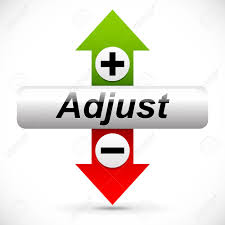Being a successful trader requires more than just buying low and selling high. It requires a disciplined approach to every trade you make. This is where a trading plan comes into play. A trading plan is a comprehensive document outlining your goals, risk-reward ratio, entry and exit strategies, and more. In this blog, we will explore each element of a trading plan in depth. From defining your goals to choosing a risk-reward ratio that works for you, we will help you create a plan that sets you up for success. We will also discuss the importance of monitoring your trade performance, staying disciplined, and sticking to your plan. Whether you are a beginner or an experienced trader, understanding the fundamental elements of a trading plan is the first step towards trading with confidence.
a trading plan comes into play. A trading plan is a comprehensive document outlining your goals, risk-reward ratio, entry and exit strategies, and more. In this blog, we will explore each element of a trading plan in depth. From defining your goals to choosing a risk-reward ratio that works for you, we will help you create a plan that sets you up for success. We will also discuss the importance of monitoring your trade performance, staying disciplined, and sticking to your plan. Whether you are a beginner or an experienced trader, understanding the fundamental elements of a trading plan is the first step towards trading with confidence.
What Is a Trading Plan?
A trading plan is a comprehensive set of rules designed to cover all aspects of the trading period. It is essential for every investor to have a trading plan that includes their objectives, time frame, and risk tolerance. By using a trading plan, one can eliminate the role of emotions and guesswork from trading decisions, allowing for consistency and discipline in the execution of trades.
A trading plan should include a tactical strategy for buying and selling assets. Having a plan in place ensures that investors stick to their investment strategy, even during volatile markets. When markets decline, having a robust trading plan in place can help investors avoid making impulsive or irrational decisions. Similarly, a trading plan can help investors navigate bullish market conditions by providing structure and guidance. Ultimately, a trading plan is an essential tool to help investors achieve their long-term financial goals.
Understanding the Trading Plan
A trading plan is a set of rules created by an investor that covers all the aspects of a trading period, including their objectives, time, and risks. The plan should cover the market(s), timeframes, strategies, entry and exit rules, and money management approach. A trading plan is essential for success in trading as it helps you set clear goals and objectives and stay focused. Building a trading plan is a skill everyone should learn to trade successfully. With careful planning and adherence to it, investors can manage the risk and achieve their financial goals.
Define your goals
Before you start trading, it’s important to define your goals. The fundamental elements of any trading plan should incorporate your objectives, risks, and time frame. It’s essential to use a trading plan outline as a base for all markets, but after that, get creative to tailor it to your specific trading goals. It’s also necessary to review and update your trading plan regularly.
Your trading strategy should be a blueprint for how you approach trading with clear objectives. Importantly, a trading plan should cover all aspects of your trading period and be based on thorough research. Remember, a sound trading plan can provide clarity, structure, and direction to your trading decisions, ensuring that you remain focused on achieving your objectives amidst the chaos of the market.
Choose a risk-reward ratio
When developing a trading plan, it should cover all aspects of trading, including market analysis, timeframe, trading strategies, entry, exit rules, and money management approach. Defining a risk-reward ratio is an essential part of the money management strategy. The ratio is calculated by comparing potential loss to potential gain. It is recommended that traders risk less than 2% of their trading capital on each trade.
Furthermore, a trading plan should also define the maximum loss amount for each trade to limit risk exposure. It is crucial to consider correlations when trading across multiple asset classes to minimize the risk of loss. One of the most important things to keep in mind is not to trade when distracted, angry or preoccupied. Sticking to the plan is vital to avoid any deviation in strategy, ultimately leading to successful trading outcomes.
Your time horizon
Your trading plan is essential to managing your time while trading. Determining your time horizon is a key element of any trading plan. Before initiating a trade, decide on the holding period based on whether you’re an intraday trader or a swing trader. Intraday traders are limited to market hours, while swing traders may hold positions for several days. Each market has varying trading hours, and the open and close traditionally have the most volume and volatility.
Although there are no formal rules for creating a trading plan, the timeframe should be prioritized based on your trading style. Many creative approaches can be used in crafting an effective trading plan. The key is to keep it simple and adaptive to market conditions. Understanding your time horizon and the overall market will help you maintain discipline and meet your trading goals.
Your entry strategy
Your trading plan should encapsulate all aspects of trading, from your entry and exit rules to your objectives and money management strategies. Your entry strategy is a crucial factor since it lays the foundation for your trading plan. An effective entry strategy involves distinguishing the right time to enter the market, such as when the market is overbought or oversold. Understanding market trends and applying technical or fundamental analysis to identify a good entry point can increase trading profits by preventing trading at the wrong time.
Creating a trading plan with at least seven elements is essential for optimizing trading outcomes. These elements include markets, timeframes, strategies, entry and exit rules, and money management. But remember, creating a trading plan is the first step; reviewing it periodically with careful consideration to changing market conditions is critical for maintaining success. Be sure to put a plan in place today to give yourself the best possible chance of success in trading.
Is this stock poised for a breakout?
One of the fundamental elements of a successful trading plan is having a strong entry strategy. Look for entry signals such as breakouts from support or resistance levels, as these can be strong indicators of future price movements. Narrow down your list of candidates and identify the set-up and triggers for trading. Once you have identified a potential trade, set an entry price target based on the breakout trigger price.
When considering trading stocks, it is often beneficial to look for those with above-average volume after resistance breakout. This can provide more liquidity and increase the chances of a successful trade. It is also important to manage risks by placing stop orders to sell stocks in the event of a reversal. By incorporating these strategies into your trading plan, you can increase your chances of success and ultimately achieve your financial goals.
Has this stock pulled back?
When it comes to creating a trading plan, your entry strategy is a crucial component. One effective entry strategy is to set your entry price near the breakout trigger. This can help increase the chances of capturing upward momentum.
However, some investors may opt for automatic investing based on percentage drops or monthly contributions. Meanwhile, buy-and-hold investors may not actively monitor their holdings until retirement.
Regardless of your investment approach, it’s important to have a sell rule in place if your investment starts to decline too much in value. A trading plan is necessary to navigate the inevitable ups and downs of investing, even with automatic investing strategies. So, the next time you consider a trade, ask yourself: has this stock pulled back? And consider your entry and sell rules accordingly.
Your exit plan
As part of your trading plan, your exit strategy is a crucial element that needs to be carefully considered. One way to manage risks during adverse trade movement is to set stop orders below support levels. This will help prevent any significant losses.
Your trading plan should cover all seven fundamental elements, including market, timeframe, entry, and exit rules, rules of trading, and money management approaches. Be sure to review your trading plan regularly to ensure it is up to date and effective.
The two essential elements of your trading strategy are your entry and exit rules. Entry rules can be based on either fundamental or technical analysis, while exit rules can be for taking profits or limiting risks. During favorable trades, consider selling part of your position at your initial target price. By doing so, you can secure profits and reduce your risk of significant losses.
Your position size
A trading plan is an essential tool for managing risk and optimizing profits. Position sizing is a critical part of this plan as it determines exactly how much you are willing to risk on each trade. It depends on the number of shares traded and the risk/reward ratio. The dip and rip pattern is commonly used while creating a trading plan to maximize profit. It is essential to stick to your plan when trading and avoid becoming greedy. Make sure to review and update your trading plan regularly to enhance your performance. Remember, a well-structured trading plan can help you make informed decisions and pave the way for a successful trading experience.
Your trade performance
Trade performance is key when it comes to trading. Having a well-crafted trading plan can help you achieve your goals and minimize risks. A trading plan is a critical set of rules that helps traders analyze the market and make informed trading decisions. It should cover essential elements such as entry and exit strategies, risk management techniques, and trading goals. Losses are natural in trading, and each trader’s plan is unique. Stop-loss and limit orders are effective ways to manage the risk involved in trading. There are no hard and fast rules when it comes to creating a trading plan- get creative and build one that suits your needs and goals. Remember, a well-crafted trading plan is a blueprint for your success as a trader.
How profitable are your trades?
One of the key reasons for having a trading plan is to monitor your trade performance and profitability. A good trading plan should cover the entry and exit plan, risk management, and goals to build healthy trading habits. It should also be a set of rules for entering and exiting trades, risk management, and journaling which includes capital and asset traded.
A good trading plan should outline your trading style, risk management, expectations, and approach to avoid mistakes. It is important to review exit criteria for trades and identify profitable trends. Ultimately, trading can be profitable with a positive trade expectancy, and a trading plan can help you achieve this by providing a roadmap to success.
Sticking to it
Creating a trading plan is a crucial element of successful trading. However, it is equally important to stick to it. Once you have defined your trading goals and objectives, learned the basics of technical analysis, and developed a trading strategy or system, it’s time to create a risk management plan.
The risk management plan should include protecting your capital and profits while minimizing losses. It is imperative to stick to the trading plan and not let emotions get in the way. Monitor your performance regularly, and make adjustments as needed. Sticking to your trading plan will help you make informed decisions and achieve your trading goals in the long run.
Conclusion
In summary, a trading plan serves as a blueprint for making wise investment decisions. It should encompass all the essential details, including goals, time horizon, risk-reward ratio, and entry and exit strategies. Without a proper plan in place, you are putting your investments at risk. Once you have a plan, it’s essential to stick to it for optimal results. Keep track of your trade performance and evaluate your results to fine-tune your strategy. Start investing smartly and ensure your financial success. If you want to learn more about trading plans, check out our comprehensive guide on the fundamental elements of a trading plan.


